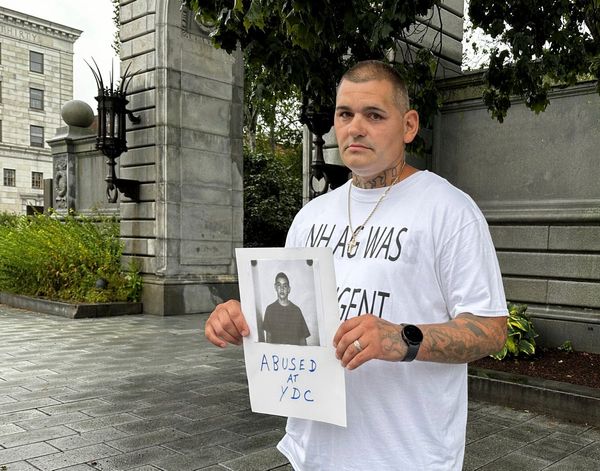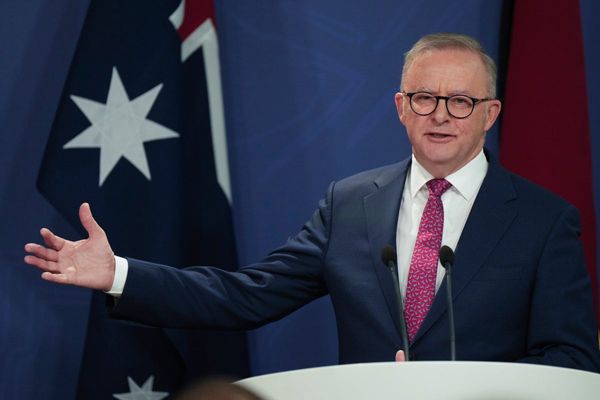Most people hadn't heard of it a couple of years ago, but now the energy price cap is rarely out of the news as hard-pressed families grapple with spiralling household bills.
From January 1, the new price cap will be £4,279 per year, and will stay there until April 1, when a new price cap will be set by Ofgem. Prior to August 2022, the cap was set every six months, but Ofgem announced in the summer that it would be reviewed every three months, in the light of spiralling wholesale energy costs.
To complicate things even further, the Government announced the Energy Price Guarantee (EPG), which came into effect on October October 2022. This reduces the unit cost of electricity and gas so that households with typical energy use pay to an average of around £2,500 a year until March 31, 2023 and around £3,000 a year until March 31, 2024. These figures are based on a household with typical consumption on a dual electricity and gas bill paid by direct debit.
Read more: Facebook energy group swamped with demand as cost of living crisis bites
The amount you pay will depend on how much energy you use, where you live, how you pay for energy, and your metering arrangement.
So what exactly is the energy price cap and how long has it been around? Originally introduced to protect people who tended not to shop around and switch suppliers for their household energy, the price cap was meant to protect customers from unreasonable Standard Variable Tariffs.
When it was introduced, in 2019, most households would be much better off by finding either a better variable rate or signing up to a fixed-price tariff. The price cap was started by Ofgem amid concerns that those who did not move were paying a lot more. The cap was designed to limit the unit rate and standing price energy suppliers could charge, and for the first four caps, was great news for families, as it reduced steadily until it reached an all-time low of £1,042 in August 2020.
Everything started to change after that, when the cost of wholesale gas started to soar, impacting household energy bills and causing dozens of small fuel suppliers - who often offered the best fixed-rate tariffs - to go under. Currently, with the energy market in crisis, there are no deals cheaper than the energy price cap, and the advice has changed from shop around and switch to a better deal for your energy to stay where you are.
When was the price cap introduced?
The price cap was originally introduced for families using prepayment meters in April 2017 and was expanded to include people on standard or default variable tariffs from 1 January 2019.
Who decides what the price cap will be?
The cap is set four a year by the Office of Gas and Electricity Markets - better known as Ofgem.
How does it work?
The price cap sets a limit on the maximum amount suppliers can charge for each unit of gas and electricity you use, and sets a maximum daily standing charge (what you pay to have your home connected to the grid). It only applies to providers' standard and default tariffs, so if you're lucky enough still to be on a fixed-term energy deal, the cap doesn't apply.
How much has the cap gone up since it was introduced?
The cap has gone up by £3,142 since it was introduced in February 2019, and a massive £3,237 from the lowest cap of £1,042 in August 2020.
Every cap has been:
- January 2019: £1,137
- April 2019: £1,254
- October 2019: £1,179
- April 2020: £1,162
- October 2020: £1,042
- April 2021: £1,138
- October 2021: £1,277
- April 2022: £1,971
- October 2022: £3,549
- January 2023: £4279
So is this the most I will pay?
Sadly, no.
The price cap is a cap on the price charged by kilowatt hour (kWh), it's It’s not a cap on the cost of your bill. That means there's no upper limit to what you actually pay – if you use more energy, you'll pay more, use less and you'll pay less. The figure is derived from 'average usage' of 12,000 kWh pa of gas and 2,900 kWh of electricity.
How often does the price cap change?
The price cap changes four a year. However, the energy price cap changes don’t actually take effect in the months we hear whether they’re rising or falling, this happens around two months later.
Is it worth ditching the price cap for a fixed deal?
The price cap has been so much cheaper over these last few high-use months compared to fixed energy deals, so sticking on it has been the right move for most.
How do I know if I'm on a price-capped tariff?
If you've never switched your energy tariff, or have come off a fixed-rate deal and not re-fixed, chances are you will be on a default tariff. You will have also been switched for a default tariff if you were with a supplier that has gone bust and you have been switched to a new supplier under Ofgem's supplier of last resort scheme. Families who have moved home will also have lost their fixed deals when they left their old property.
Does the price cap change depending on how I pay?
Yes it does. Families paying their bills by either cash, cheque or quarterly direct debit will pay more than the headline rate, which is the cap for customers paying by monthly direct debit.
If you pay by prepayment meter, your new cap will be roughly £80 more for average use.
How is the price cap calculated?
The energy price cap is calculated using the average gas and electric usage statistics per annum in the United Kingdom, which are 12,000 kWh pa of gas and 2,900 kWh pa of electricity. The price cap is calculated based on a range of costs energy suppliers face.
The largest cost is wholesale energy – what energy suppliers pay for gas and electricity. This accounts for about 41% of a typical bill for a tariff priced at the maximum allowed under the current price cap. Other elements include things such as the costs of maintaining the pipes and wires that carry gas and electricity, or the operating costs suppliers face for billing customers and providing metering services.
Ofgem can also add on any unexpected costs to the price cap. Fort example, during the pandemic Ofgem included a £24 per customer allowance in the cap to cover the economic fallout.
How long will energy prices by capped for?
When it was first introduced, the cap was set to remain in place until at least the end of 2020, although the Government has the option to extend it on an annual basis until 2023 at the latest. The Government has announced its intention to allow the price cap to be extended beyond 2023 if required.
Why are fuel prices rising so much?
Due to increasing wholesale gas prices, which have surged since last summer, with industry group Oil & Gas UK reporting prices have increased by 250% since the start of 2021. Europe experienced a prolonged and colder winter which depleted gas reserves and caused demand to increase.
The UK’s wind farms also failed to fill the energy gap due to slow wind speeds during last summer, which were some of the least windy months since 1961. China, which is the world’s largest consumer of energy, also saw an increased demand and while European countries have scrambled to import more gas from Russia, Gazprom - the country’s largest energy supplier - refused to increase flows to the continent. This particularly affected the UK as just one per cent of Europe’s stored gas is held here.
What is the Energy Price Guarantee?
This is a temporary Government subsidy which reduces the unit cost of electricity and gas so that households with typical energy use pay. It is currently set at £2,500 a year on their energy bill until 31 March 2023 and around £3,000 a year until 31 March 2024. These figures are based on a household with typical consumption on a dual electricity and gas bill paid by direct debit.
Read more:
- 25,000 energy customers due one-off payment after Ofgem raps supplier
- How to work out how much your heating costs per hour
- How to defrost the condensate pipe on your boiler in 4 easy steps
- Heating on all the time or not? Martin Lewis answers age-old question
- What is boiler cover and is it worth buying for peace of mind?







